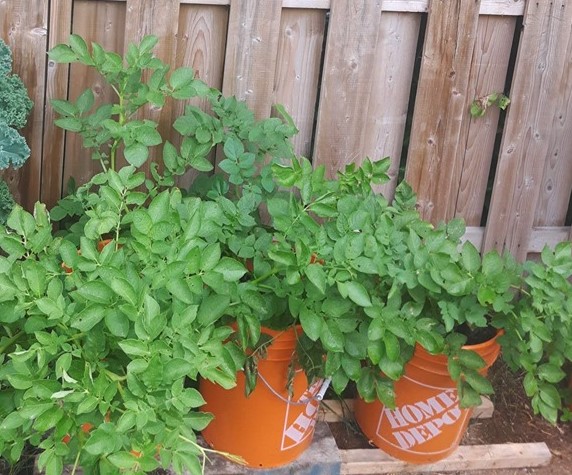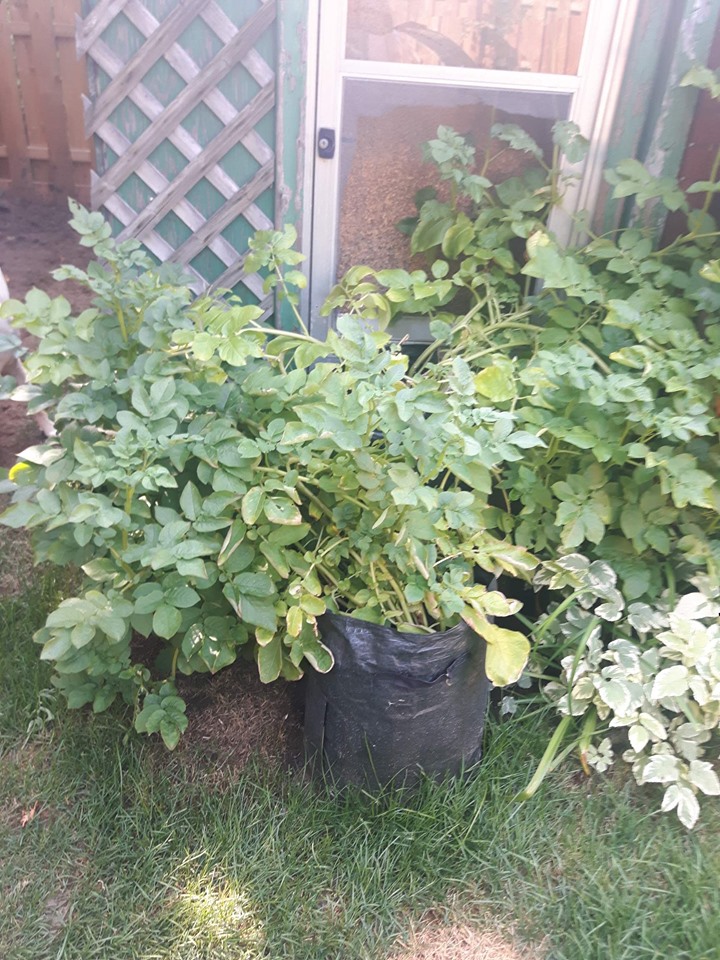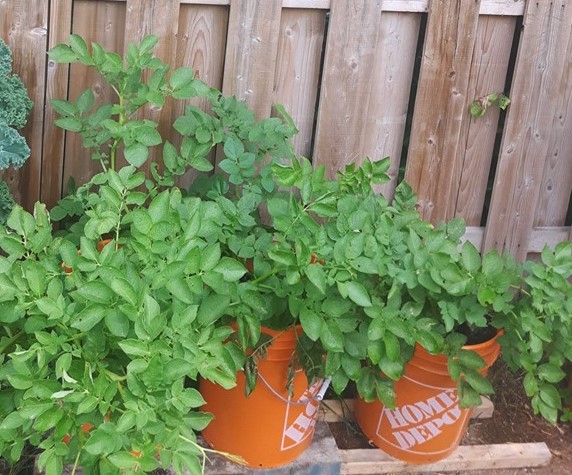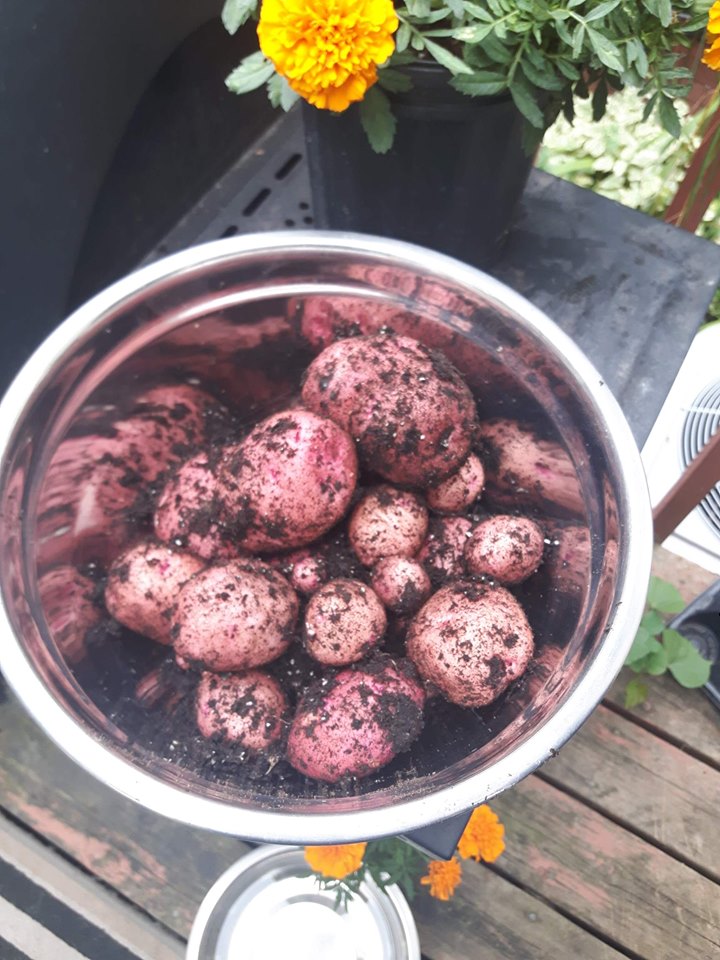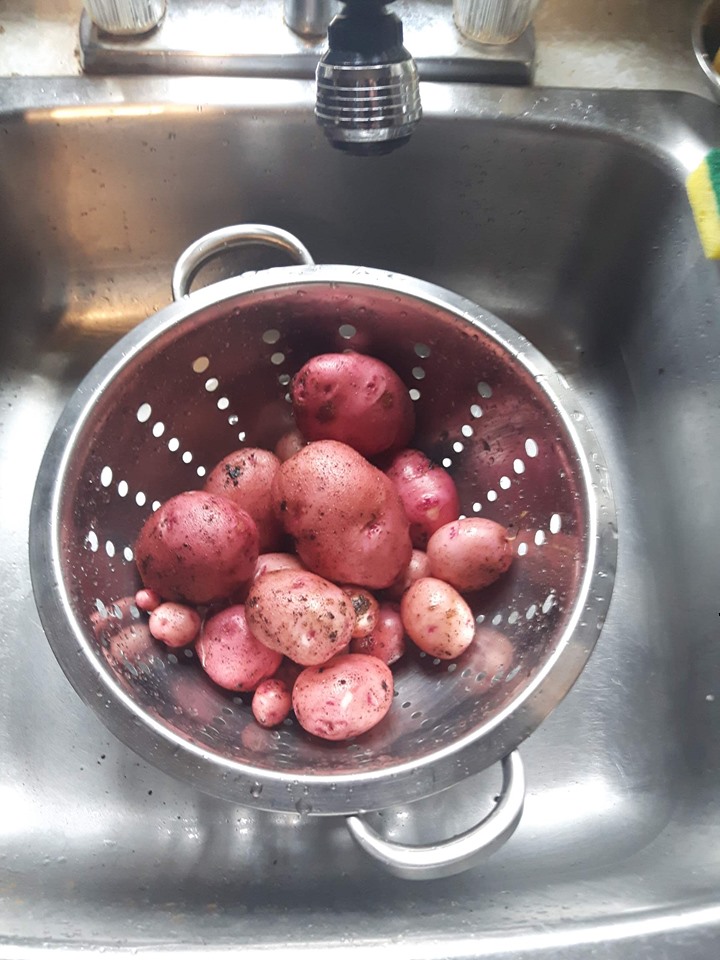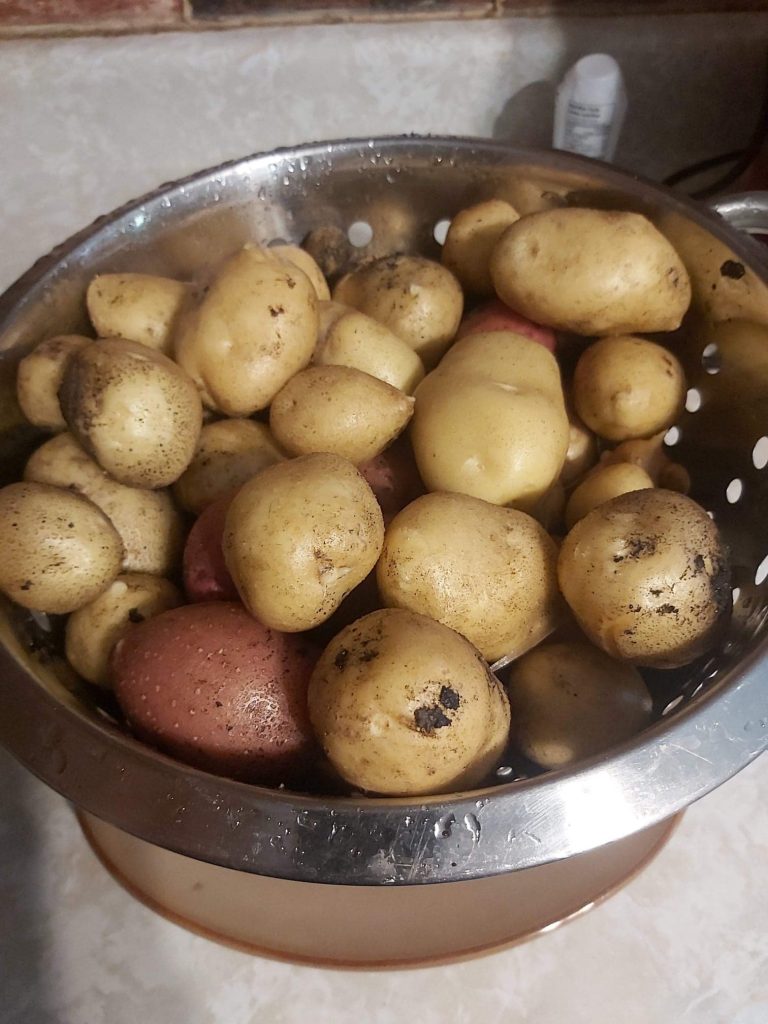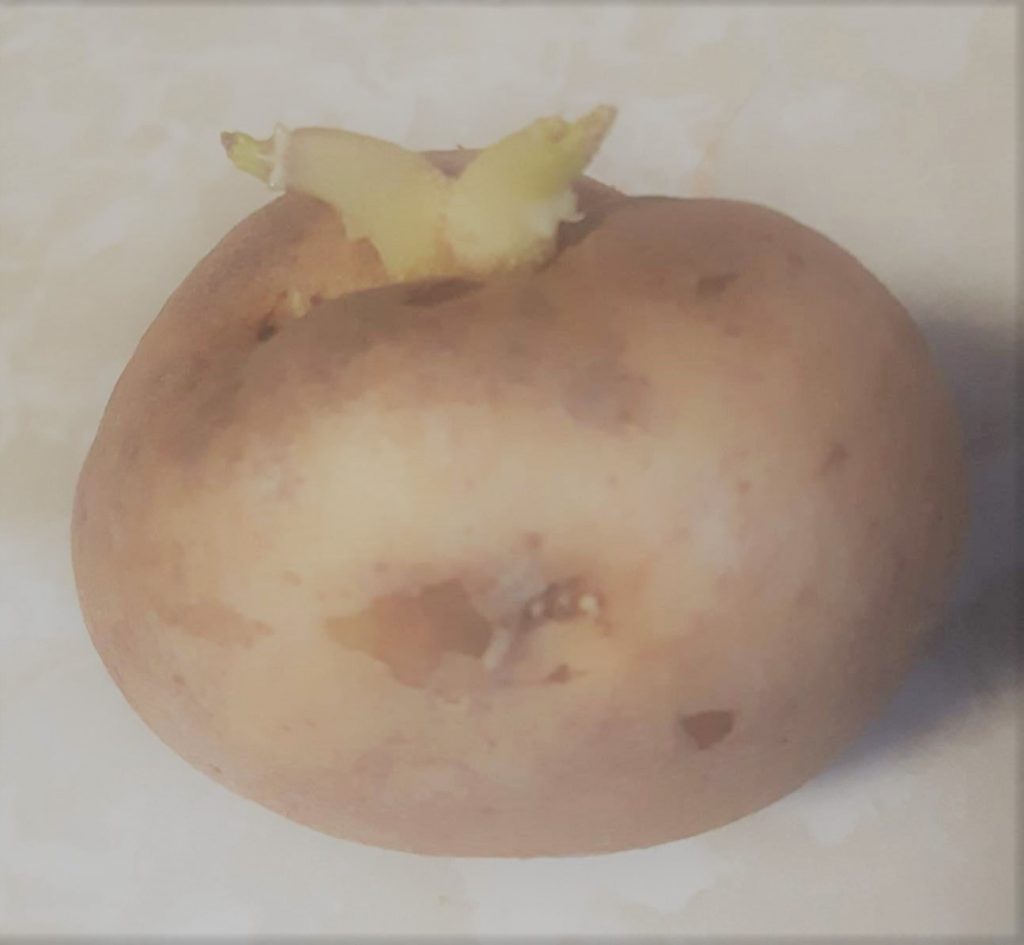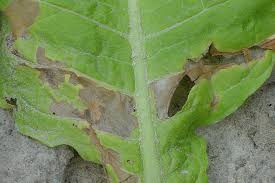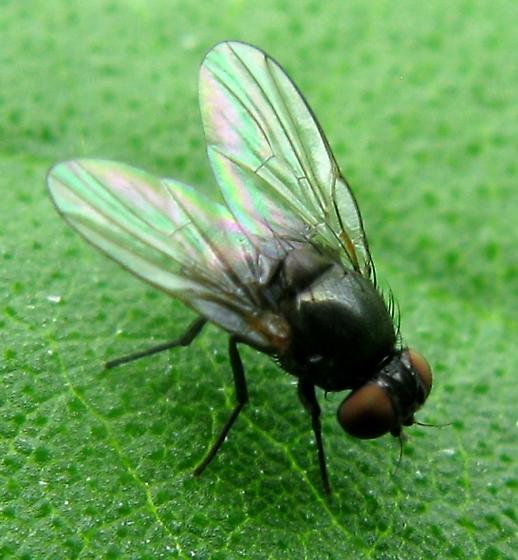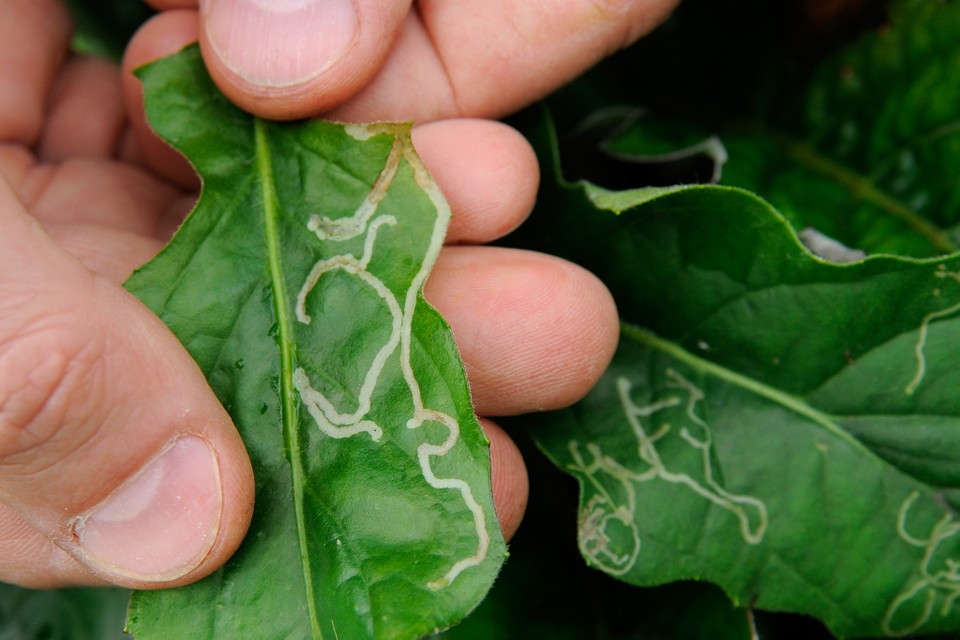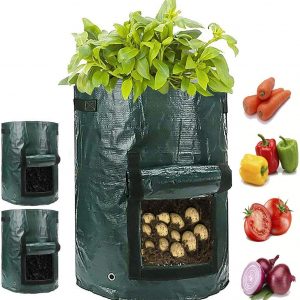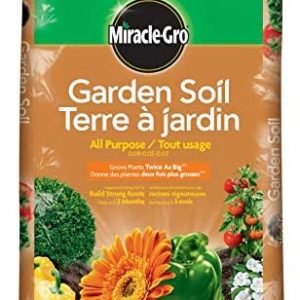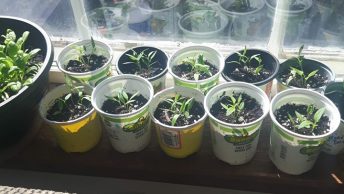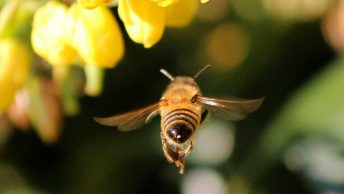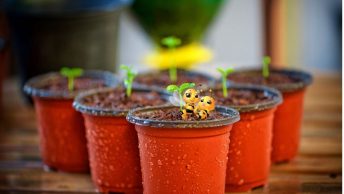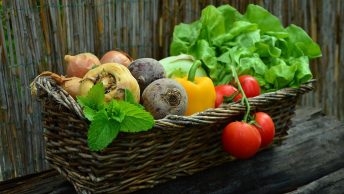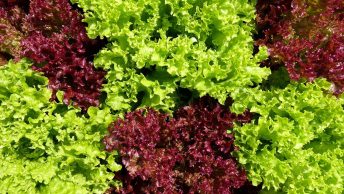How To Grow Potatoes Like An Expert In Containers in just a few steps. Although it can take time to completely have your potatoes fully planted. If you follow my steps you are definitely going to yield the most of what you can.
Table of Contents
Potato Bags Vs Containers
I have grown potatoes in both buckets and bags. I can honestly say that I yielded more from the bags. Therefore, I am going to use my bags again this year but last year I did notice quite a bit of difference. Take a look at the pictures below from two bags. Because I used a white potato from my pantry growing eyeballs from it. I did get quite the haul of potatoes on my first two bags. They were all so evenly plump!
Where as from the pictures under this is from my Orange Buckets. Now take in to consideration that I grew the small ones. I planted them from my pantry as well. I had small red and white potatoes that I let grow eyeballs and I used them for my buckets.
The picture below is from one bucket where the other picture above using the bags are actually 2 bags. You can definitely see they grew much larger.
Grow Potatoes Like An Expert In Containers- Seeding Your Potatoes
Having a good strain of potatoes you love. You can regrow them! Store your potatoes in a container filled with sand. Make sure you put plenty of sand in the bucket and your potatoes in the middle and fill the bucket up with sand again. Store in a cool place and they will grow eyeballs very slowly. They should keep it all winter long. Keep humidity low and your temperature low. And be the perfect seed potatoes for the next growing season.
Planting Your Potatoes in Bags and Buckets
I usually cut my potato into small pieces with the strongest eyeballs. Then I place the cut side down and only fill the bucket just over a 1/4 full or 6″ in depth. I bury the potato and wait a couple of weeks when you will see the plant grow above the soil. Keep the soil evenly moist and regularly watered. Fill the bucket to 1/2 way full leaving just a few branches and leaves above the soil. Repeat until your plants have reached the top and you no longer have to cover them in soil. Make sure if you’re using 10 Gallon Bags you plant only a few potatoes per bag (or container.)
Here is a great video to show you how to do exactly that.
Potato Plant Bugs and Diseases
Colorado Potato Beetle
How to Get Rid of Colorado Potato Beetles
These can be quite a nuisance. I get them every year. However you can pick them off in containers since you can get to them easy. You can throw them into a bucket of soapy water with the eggs if you want to get rid of them. Do not use any insecticides on them. They have a very high resistance to them. Neem Oil works very well. I have even used a vacuum to remove them and the eggs! However if you stay on top of things it should be just fine. If you have lots of stink bugs the will prey upon Colorado beetles.
Rubber Tuber Moth
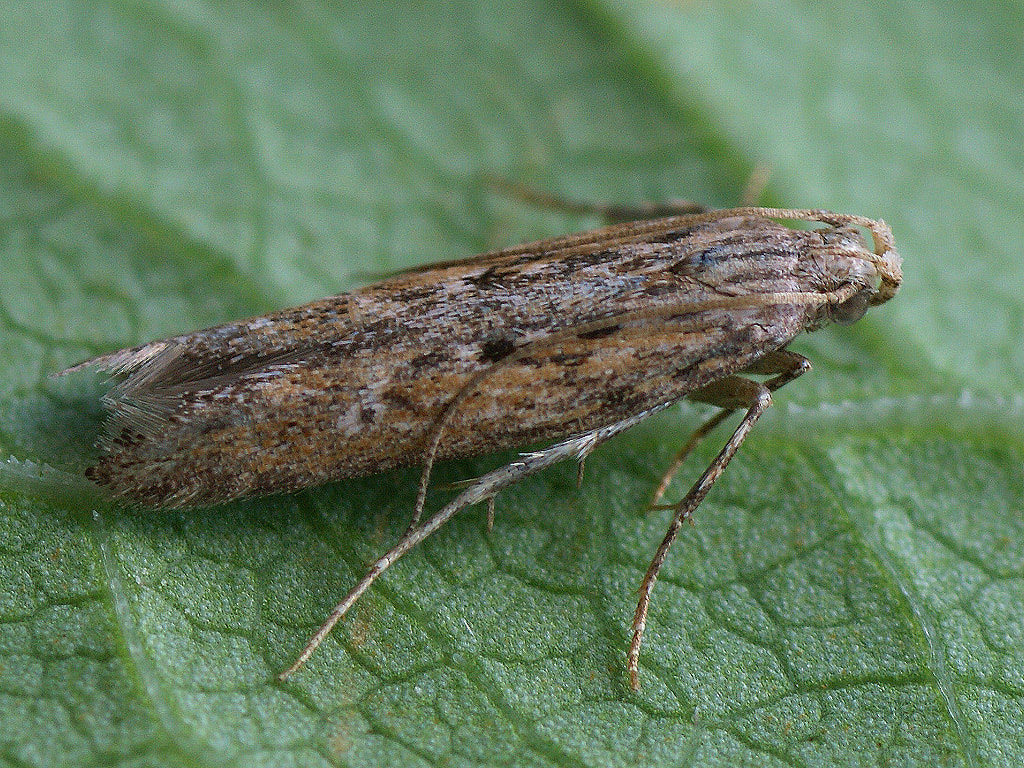
Sometimes the only way to tell if the larva has made its way into the tubers (potatoes) is to cut one open. That is why having bags come in so handy. Most of them have a flap so you can reach in and grab a potato or two while they are growing. Soil that has cracked is most often a target for these. You can usually get away with not doing much if you have wasps around Lady bugs and earthworms help as well. Therefore, Just make sure you remove the infected potato’s or tubers.
Leafminer fly
How to Get Rid of Leafminer Flies
The best way is neem oil, to be honest. It is called Safer BioNeem. It will NOT harm our honey bees or beneficial insects. The more healthy your plants the less likely you will get them. Stay vigilant. Pick off and destroy all the bad infected leaves. Make sure to dispose of it in a bucket of soapy water to reduce the chance of reindentation.
Bacterial Infections in Potato Plants
Late Blight in Potato Plants
Considered to be a potato virus it can still cut your yield down to 50 percent. It is caused by water mold. It will destroy your whole potato plant if you’re not careful.
Bacterial Wilt
This is caused by a pathogen that will kill and spread quickly to other plants. Make sure you get rid of the soil and the plant immediately. Do not re-use the soil. Bacterial Wilt can travel to tomatoes and other sensitive nightshade plants.
Potato Blackleg
This is a bacterial infection causing the tubers to rot in the soil and in storage. There is not much you can do about your plants once they have these awful plagues! Remember to throw out any of your soil or potatoes that are infected.
Potato Diseases Identification
This is an excellent resource to find and identify anything that you may think is wrong with your potato plants. It is called GrowVeg, and they have a potato disease identification page.
How To Grow Potatoes Like An Expert In Containers Tips
- Don’t plant your potatoes in a container in or near asparagus, carrots, cucumber, melons, parsnips, squash, sunflowers, or turnips.
- Plant your potato plants near bush beans, celery, corn, garlic, marigolds, onions, and peas.
- Store your unused potatoes for seeding the next year. Place them in a bucket filled with sand and store them in a cool dry place until planting season.
- Plant Potatoes in Early March indoors and move outdoors when the chance of frost has ended. Plant your next container a week later and the next one to keep your potatoes coming in every week during harvest time.
- Make sure you keep them evenly moist and do not let the soil crack or you can allow pesky bugs to ruin your container potatoes.
- Store them in a cool dry place and eat after the skin has hardened a bit for ultimate nutrition value.
Supplies You Need To Grow Potatoes in Containers or Bags
- Potato Seeds
- Soil mix rich in nutrients
- Containers like buckets or Potato Bags
- Full to Partial Sun
My Recommendation to get you started
Basil Beans Beets Bell Peppers Carrots Cayenne Peppers Celery Chinese Eggplant Chives Cucumber Garlic Jalapeno Kale Lemon Lettuce Mint Onions Oregano Parsley Peas Potatoes Rosemary Sage Spinach Thyme Tomatoes Zucchini


